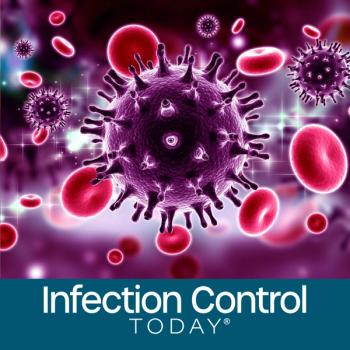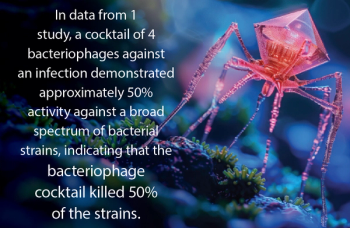
- Infection Control Today, January/February 2022, (Vol. 26, No. 1)
- Volume 26
- Issue 1
COVID-19 Spread: Droplets or Particles? It’s Not an Either/Or
Recent research into COVID-19 suggests that health care systems need to move beyond the idea that pathogen spread happens either via droplets or aerosolized particles. Patients can generate the full range of respiratory particles.
The innumerable problems with health care systems in the United States and the rest of the world that were exposed by COVID-19 continue to keep medical investigators busy. They are finding yet more dimensions to the pandemic that has stomped about since March 2020.
At the beginning of the pandemic, experts struggled to understand just how the SARS-CoV-2 virus spreads: by droplets or particles? But that might not be the right question.
In a review published in November 2021 in the Annals of Internal Medicine (AIM),1 Michael Klompas, MD, MPH, an infectious disease expert and a professor of population medicine at Harvard Medical School in Boston, Massachusetts, and his colleagues argue that division of droplet and aerosol transmission is misguided and needs to be retired.
There are viruses such as influenza and mumps that spread by relatively large droplets produced by coughing and sneezing and that fall to the ground relatively quickly. Doctors, nurses, and other clinicians are advised to wear face masks to block the droplets.
Other pathogens are aerosolized, spreading via minute respiratory particles that individuals produce when they talk and breathe. Aerosols tend to stay suspended in the air for much longer periods of times than droplets and travel much farther.
As an article in ICT® pointed out in October 2020, perhaps the best analogy for COVID-19 would be how cigarette smoke can linger and spread in an enclosed setting such as a bar (back when smoking was allowed in those establishments).2 In such a situation, 6-foot social distancing offers very little protection.
Measles and tuberculosis are 2 examples of viruses that spread this way. Precautions against aerosols include N95 masks, negative-pressure rooms, ventilation, and high-efficiency particulate air (HEPA) filters.
Klompas et al argue that research into COVID-19 and the SARS-CoV-2 virus demonstrates that individuals generate the full range of respiratory particles, not just either droplets or aerosols. Aerosolized droplets can stay aloft for long periods, and respiratory viruses are not picky about the size of particle that they hitch a ride on. However, aerosols may account for most transmission, partly because individuals produce aerosols just by talking and breathing.
The governing factor of transmission, wrote Klompas et al, is infectious dose—the amount of virus an individual is exposed to. Infectious dose is a product of time and exposure concentration, or how much virus is in the air, the authors wrote. Poor ventilation can allow virus-laden aerosols to accumulate and increase the exposure concentration and, as a result, the infectious dose. Good ventilation, HEPA filters, and ultraviolet disinfection can decrease the amount of virus floating in the air.
Source strength—or how much virus an infected individual is spewing into the air in respiratory particles—is another factor in the complicated question, the authors explained.
Klompas et al discussed some of the implications of the current understanding of respiratory virus transmission for infection control policies and programs. Here is their list of potential policy responses, which was included in the AIM review:
- Consider creating a uniform set of respiratory precautions for all respiratory pathogens rather than differentiating between airborne vs droplet pathogens.
- Consider using higher-level respiratory protection (eg, N95 respirators) in the care of all patients with active respiratory viral infections.
- Allocate airborne-infection isolation rooms for pathogens historically associated with long-range transmission and for patients with high viral loads.
- Reinforce minimum ventilation standards for nonclinical spaces.
- Consider using higher-level respiratory protection such as N95 respirators for all prolonged, face-to-face encounters when the community incidence of SARS-CoV-2 is high.
- Consider retiring aerosol-generating procedures.
This article originally appeared in
References:
- Diamond F. Q&A: hospital ventilation designed to thwart COVID. Infection Control Today®. December 29, 2020. Accessed December 9, 2021. https://www.infectioncontroltoday.com/view/q-a-hospital-ventilation-designed-to-thwart-covid
- Klompas M, Milton DK, Rhee C, Baker MA, Leekha S. Current insights into respiratory virus transmission and potential implications for infection control programs: a narrative review. Ann Intern Med. Published online November 9, 2021. doi:10.7326/M21-2780
- Diamond F. Smoke gets in your eyes: how COVID spreads indoors. Infection Control Today®. October 6, 2020. Accessed December 9, 2021. https://www.infectioncontroltoday.com/view/smoke-gets-in-your-eyes-how-covid-spreads-indoors
Articles in this issue
almost 4 years ago
Add Biopreparedness to IP Checklistalmost 4 years ago
Infection Control in Dentistry Before, During, and After COVID-19almost 4 years ago
Brushing Up on Sterile Processing in Dentistryalmost 4 years ago
Changes COVID-19 Brought to Long-Term Care Facilitiesalmost 4 years ago
Some Cleaning Methods May Contaminate Health Care Workers and PPEalmost 4 years ago
Going Deep: Cleaning Potential of Electrostatic Sprayersalmost 4 years ago
Omicron More Likely Than Delta to Cause COVID-19 Reinfectionalmost 4 years ago
Immune Changes in Mothers, Infants Linked to COVID-19 Infectionalmost 4 years ago
COVID-19 Vaccine Uptake Among Health Care Workers Hits WallNewsletter
Stay prepared and protected with Infection Control Today's newsletter, delivering essential updates, best practices, and expert insights for infection preventionists.






